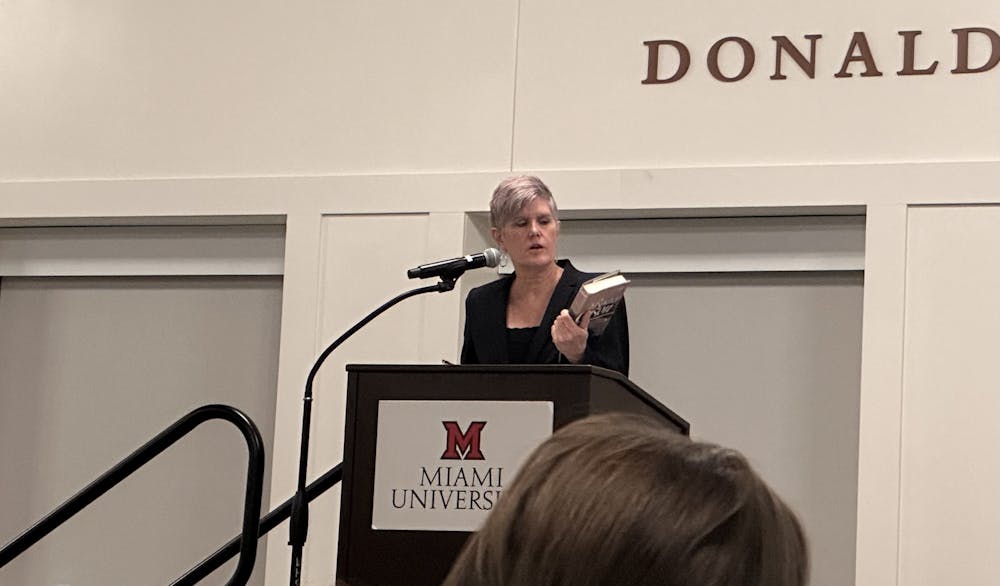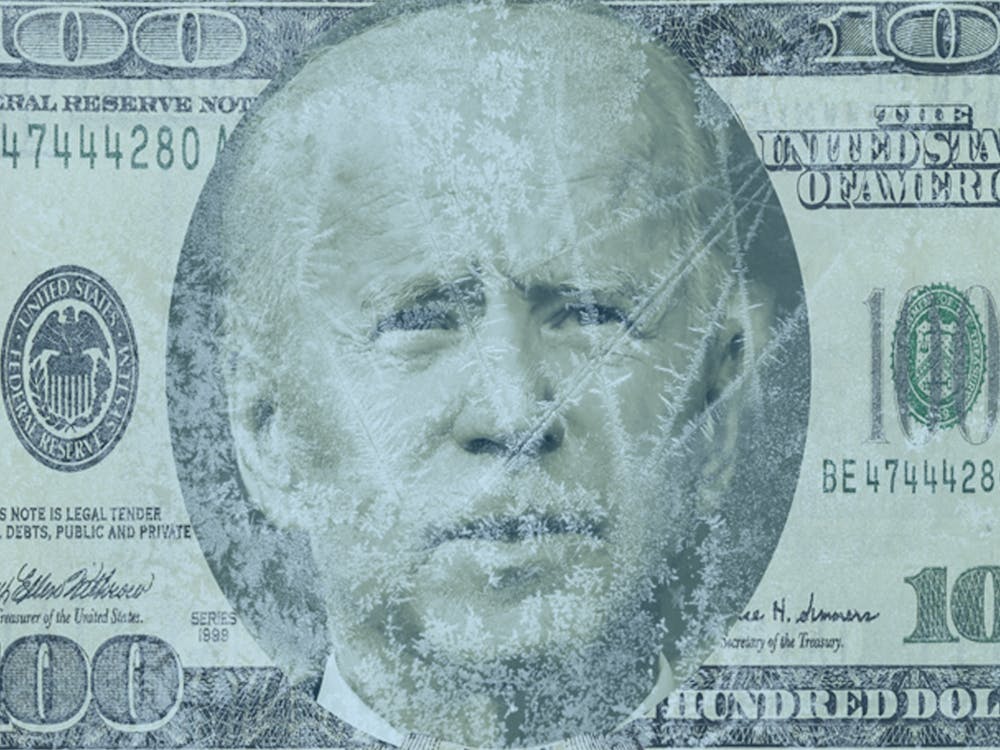Introduced as the “new Rachel Carson,” the biologist, writer and activist Sandra Steingraber spoke as part of Miami University’s Environmental Justice John W. Altman lecture series on Tuesday, Nov. 14.
Steingraber devoted her talk to tracing the themes of the current climate crisis and how to respond to them.
A master of narrative herself, Steingraber invoked the audience to imagine the state of our planet as “a tree with a double trunk,” with one side representing the pollution crisis and the other the climate crisis. The two sides are distinct at the base but intertwine higher up, she said.
Steingraber then drew upon Rachel Carson, the beyond influential environmental writer who exposed the effects of the pesticide DDT in her renowned work “Silent Spring,” as an example of how to best represent the pollution crisis through narrative. Carson wrote “Silent Spring” almost half a century ago, and Steingraber stressed the legacy of literary talents like Carson and how they still hold the power to “awaken public consciousness.”
While Carson successfully visualized the first trunk of the pollution crisis through “Silent Spring,” the climate crisis trunk is still left in obscurity.
Steingraber described the second trunk as more complex since we see the climate crisis manifested in a multitude of ways such as rising levels of greenhouse gasses, intense storms, problems with bees, rising sea levels and more.
“How do we write about [the climate crisis]? … What narratives do we need in this moment of time?” Steingraber asked.
Steingraber said climate scientists need to find a language to inspire people rather than digging them into a hole of despair. Additionally, Steingraber believes that inspirational language can work to bring the heavy, convoluted science of the climate crisis to life.
Steingraber then read from her own “Carson-esque” book, a work in progress about visualizing the climate crisis.
Flipping the norm of describing the climate crisis in terms of atmospheric emissions, Steingraber begins her book by taking her readers underground to the “deep biosphere.” Steingraber describes how the unseen environment of the deep biosphere is affected by poisonous fracking methods similar to the DDT program that Carson dismantled and visualized in “Silent Spring.”
Steingraber not only discussed how writing can be used as a visualization tool in making the current climate crisis more digestible but also narratives such as art, music, economics, policymaking and the law.
Steingraber concluded her talk with a reading from her poem “Marcellus” as well as these two impactful calls to action: “What will you go to jail for?” and “What can you bring to this moment of time?”




